When will a vaccine free the world of coronavirus? Just now, that is the question to end all questions. And Tübingen-based biotechcompany CureVac is on the verge of having the answer. The expectations are high. The German Federal Government invested 300 million euros in the company at the right time. A site visit.
About Mr Haars and Mrs Fotin-Mleczek

Chief Executive Officer Franz-Werner Haas and Chief Technology Officer Mariola Fotin-Mleczek (photograph) currently control the fate of CureVac. 20 years ago, the biopharmaceutical company emerged from working groups at the University of Tübingen. The unique selling point is the development of medicines and vaccines based on modified messenger molecules. This promising approach has won CureVac several awards and a good deal of money from investors – from sources like SAP-founder Dietmar Hopp and the Bill & Melinda Gates Foundation. The main shareholder is currently dievini Hopp BioTech Holding.
Salvation for the world as we knew it in the spring fits into a space smaller than the head of a pin. It is so tiny that a pinhead could harbour hundreds of millions of them. These infinitesimal little bits of material could be enough to stop all coronaviruses. Thus saving humanity from deadly lung, brain and heart infections and putting the world back on the path to economic growth. Not to mention the open borders, carefree holidays or joyful festivities. At least that is the hope that has sparked billions in investment.
The effect these funds are having in daily life can be seen at CureVac in Tübingen. In a completely ordinary building complex on a hill at the edge of the university town, 430 people are currently working on creating the coronavirus vaccine. Each dose no larger than a few ten-thousandths of a millimetre, the aim is to neutralise the SARS-CoV-2 pathogen responsible for the global coronavirus pandemic. And reports from the company’s campus sound promising.
Initial tests on healthy volunteers show that the vaccine has been well tolerated in the tested doses thus far. This is a necessary prerequisite that allows the body to hopefully begin fighting the pathogen. It will not take much longer until the next research phase begins, which will make all the difference: when thousands of people are injected with the vaccine to see what happens as soon as these test subjects come into contact with coronavirus. Then we will see if CureVac’s strategy will work, a strategy in which the German Federal Government has invested EUR 300 million – a share of 23 percent before the Tübingen-based company successfully went public on the New York Stock Exchange. It would be the breakthrough the world is waiting for.
Scientists and technicians across the world are currently all attempting the same thing. Researchers are feverishly working on developing a coronavirus vaccine in over 160 laboratories in small start-ups, large pharmaceutical companies and famous universities. CureVac is at the forefront of these efforts. Because if they are successful, they will have done more than just alleviate death and terror, they will also have revolutionised medical research.
The work being done in Tübingen does not require a high-security wing to control deadly viruses and reproduce them in weaker form using chicken protein, which is the normal process for vaccine development. Here, it is impossible for life-threatening pathogens to escape because the researchers on cell biologist Mariola Fotin-Mleczek’s team only work with minimal parts of the virus: “We are focusing on using one individual protein on the surface of the virus to activate the immune system. We quickly found out where we needed to start.”
CureVac and its business founders have been working on so-called mRNA medicines and vaccines for 20 years. It is a complicated process that attempts to imitate and manipulate endogenous processes to arm a person’s immune system against intruders like viruses or tumours. mRNA, also known as messenger RNA, is something like a blueprint for replicating proteins in our body. They use a cell’s genetic code to copy the substance to be produced. The mRNA varies depending on the type of protein the body needs and creates a plan for it. In the case of a vaccine, the messenger RNA are modified in a way that changes their effect: they are designed to prevent the virus from spreading in the body’s cells by providing the blueprint for producing the viral protein in a version that is slightly modified in the laboratory and therefore harmless, and stimulating the cells to produce this protein.

At the Tübingen-based biotech company CureVac, 430 people are working on a coronavirus vaccine.
They know exactly where they need to start for the coronavirus. This is because each virus has a specific protein, whose molecules protrude like the spikes of a crown. Hence the name coronavirus. These spikes are called spike proteins. They form the spearhead of the viral attack. In the body, they dock onto the proteins on human cell membranes, which enables them to enter the cell and normally regulate blood pressure and water balance. Since the virus attacks and splits these proteins, they override this mechanism that ensures a healthy balance of fluids in the body. The virus reproduces itself in the cells that have been incapacitated as the person develops a fever, feels weak or becomes even sicker. A life-and-death battle begins when the immune system is too weak to destroy the virus.
The aim of the vaccine is to prevent this process from starting. To do this, the researchers at CureVac take the mRNA of the spike protein and change it in certain places. This process creates proteins in the body’s cells that are normally present in the virus. The immune system recognises them as foreign and as coming from the virus, which mobilises the body in the same way an infection does. Changing two of the approximately 4,000 building blocks that make up the mRNA of the spike protein is sufficient. That is already enough to alert the immune system, and the immune cells attack the apparently dangerous intruders and eliminate them. Once they have identified the enemy and developed antibodies to fight it, these antibodies patrol the body for this protein and its virus even when the battle has long since been won. This is how it arms itself for the next attack, this time from the real virus. The immune system’s memory cells also remember the intruders they have fought against. This prepares them so they can produce additional new antibodies as soon as they are attacked by a virus that has these spike proteins.

CureVac have been developing medicines and vaccines with what is known as mRNA for 20 years. It is also expected to help to win the fight against coronavirus.
Clinical trials since summer
The process that has worked in the lab and in animal trials now has to prove itself on a wide scale in humans. mRNA vaccines created according to this principle, like CureVac’s vaccine for rabies, are still in the clinical testing stage. In the case of the coronavirus, they are reportedly on the cusp of this crucial step that has been missing until now.
“Of course we cannot guarantee that our vaccine will work. Is it safe? Does it sufficiently stimulate the production of antibodies? That’s what the first clinical studies we began during the summer will show.” says Chief Executive Officer Franz-Werner Haas. “But we have good reason to assume that we will be successful. I am even assuming that we will see several vaccines on the market next year. That is probably a good thing because people react to the substances differently. Older people have weaker immune systems than younger people. People with pre-existing conditions like asthma will have different reactions than people without these conditions. In these cases, it can be useful to have variations of vaccines.”
The race for the first vaccine involves billions in investments and billions in profit and loss. The reports about how the business founders of some biotech companies spread good news and then cash in, or allegations that Russian and Chinese hackers are attempting to hack into biotech companies’ computers on behalf of intelligence services show that far more is at stake. So, just as when the first steps taken on the moon 50 years ago were not just preceded by a technological feat, but also represented America’s dominance in the era of the Cold War, the production of a vaccine – especially one from the latest generation like the one from CureVac – represents biotechnological leadership, economic strength, and even domination.

Preparing samples for the quality analysis is an important step in the quest for the best possible vaccine candidate.
And the way this type of power can be used in a time when confrontation is often preferred to cooperation was demonstrated at the beginning of the coronavirus crisis. Some people used any means available in the fight for scarce mask supplies for protection from the virus. Politicians in various countries, notably US President Donald Trump, sound the same when they talk about distributing a vaccine to the world’s population. In Germany, only when the coronavirus started did many decision-makers first realise what it means to be dependent on others: for things like raw materials, and production halls for medicines, for example. As the largest producer of pharmaceuticals, China was able to halt supplies of essential resources when it wanted to, thus sparking chaos and distress, at least temporarily.
Yet this sort of development can also be viewed in a positive light. If successful, a company like CureVac does more than simply offer an opportunity to save billions of euros in costs for treating a pandemic disease, in return for a manageable sum of public funds. It could also help to prevent the economy from crashing again. And, a company like CureVac can build the core of a future industry for Germany. Coincidentally, the company is located just a few kilometres away from the place where Carl Benz developed the car at the end of the 19th century, thereby creating an engine that put Germany on the road to becoming an industrialised nation. With this in mind, the 300 million euros the German Federal Government invested in CureVac is a strategic investment in Germany as a location.

"We quickly found out where we needed to start."
Construction of further production facilities
“Of course we are under a lot of pressure in this race”, says Franz-Werner Haas. “But it is not a race against others. It is a race against the virus. At the same time, like everyone else we are now trying to build the required production facilities. Our factory finished in December of last year – back then no one had mentioned COVID-19 yet – is a ten-gram facility. That means that we can manufacture ten grams of vaccine in one individual production run. However, we do not yet know how much vaccine we will need per patient to find the optimum dose. If one microgram is enough, we would already be able to manufacture ten million doses now. If the dose requires two micrograms, the number of doses would accordingly be five million. And our new facility, which is currently being built, would then be sufficient to manufacture one billion doses of vaccine. Strictly speaking, we are taking a risk with production just now because the final evidence is not yet available. But based on the initial data, we have every reason to be optimistic.”
As it happens, there are scientists who continue to doubt that it will be possible to develop an effective coronavirus vaccine quickly. They point out that, despite all the research, we are far from having vaccinations for every virus that is dangerous to humans. One example is the AIDS pathogen. And in the case of influenza viruses, the protection is not perfect because each time the influenza virus mutates or is modified, a new vaccine is required.
At CureVac, investors and the management believe that their strategy will be successful – so much so that the company did more than just persuade the Qatar Investment Authority to channel funds into the company. British pharmaceutical company GlaxoSmithKline also acquired a financial stake, whilst declaring that it would invest another billion euros in various stages to develop medications and build production facilities. Furthermore, CureVac is now on the stock exchange where the largest market awaits, in the USA.
“We do not doubt that we will find further investors, because completely independent of the success of the coronavirus vaccine, mRNA technology is a platform that can be used to create many other vaccines and medications. Substances that imitate our bodies’ natural processes and work against cells that make us sick: these are the substances of the future for treating the sick”, says Franz-Werner Haas.
And microbiologist Mariola Fotin-Mleczek is convinced that her team’s approach can even be better than some of their competitors. “Our optimism is based on data from the rabies vaccine, where we followed a very similar strategy”, she says. “Unlike others, our work does not involve chemical treatment of the vaccine. So we only need small amounts to generate protection, as we showed with the rabies vaccine.”
After months of restrictions and hardship, millions of people around the world are waiting to begin leading lives like they did before the pandemic broke out, as soon as they can protect themselves from the coronavirus. Belgian virologist Peter Piot vividly described the damage SARS-CoV-2 can wreak, even when people survive it. He has spent his life primarily researching AIDS and Ebola in Africa, without ever becoming infected. But he became infected with the coronavirus, probably in London, and ended up in the intensive care ward. “I have always had great respect for viruses”, Piot wrote after his illness. “But since I have felt the dominant presence of a virus in my own body, my view of them has changed. I feel much more vulnerable than I did before.”
Followed up on 16 December 2020
Meanwhile, CureVac has enrolled the first participant in the global study relevant for approval. This means that phase 3 has started for the COVID-19 vaccine. It is now being tested on over 35,000 test subjects in Europe and Latin America. CureVac expects the first results of the study during the first quarter of 2021. The vaccine could then be licensed in the second quarter.
Published on KfW Stories: 13 October 2020, last updated: 16 December 2020.


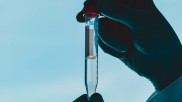

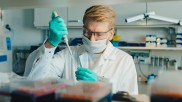
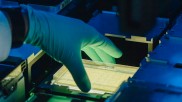
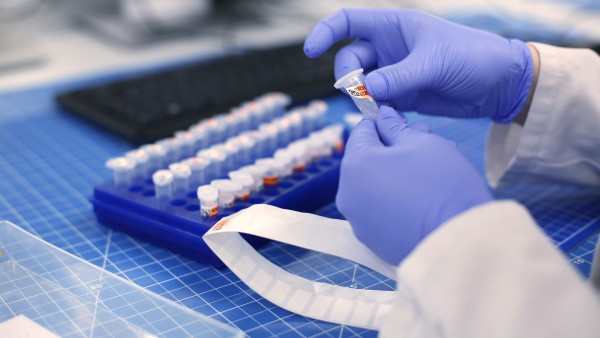
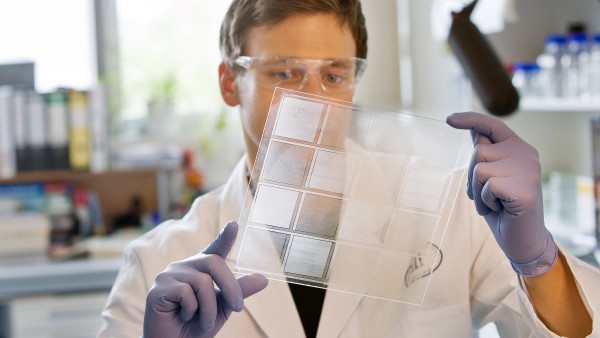

Data protection principles
If you click on one of the following icons, your data will be sent to the corresponding social network.
Privacy information